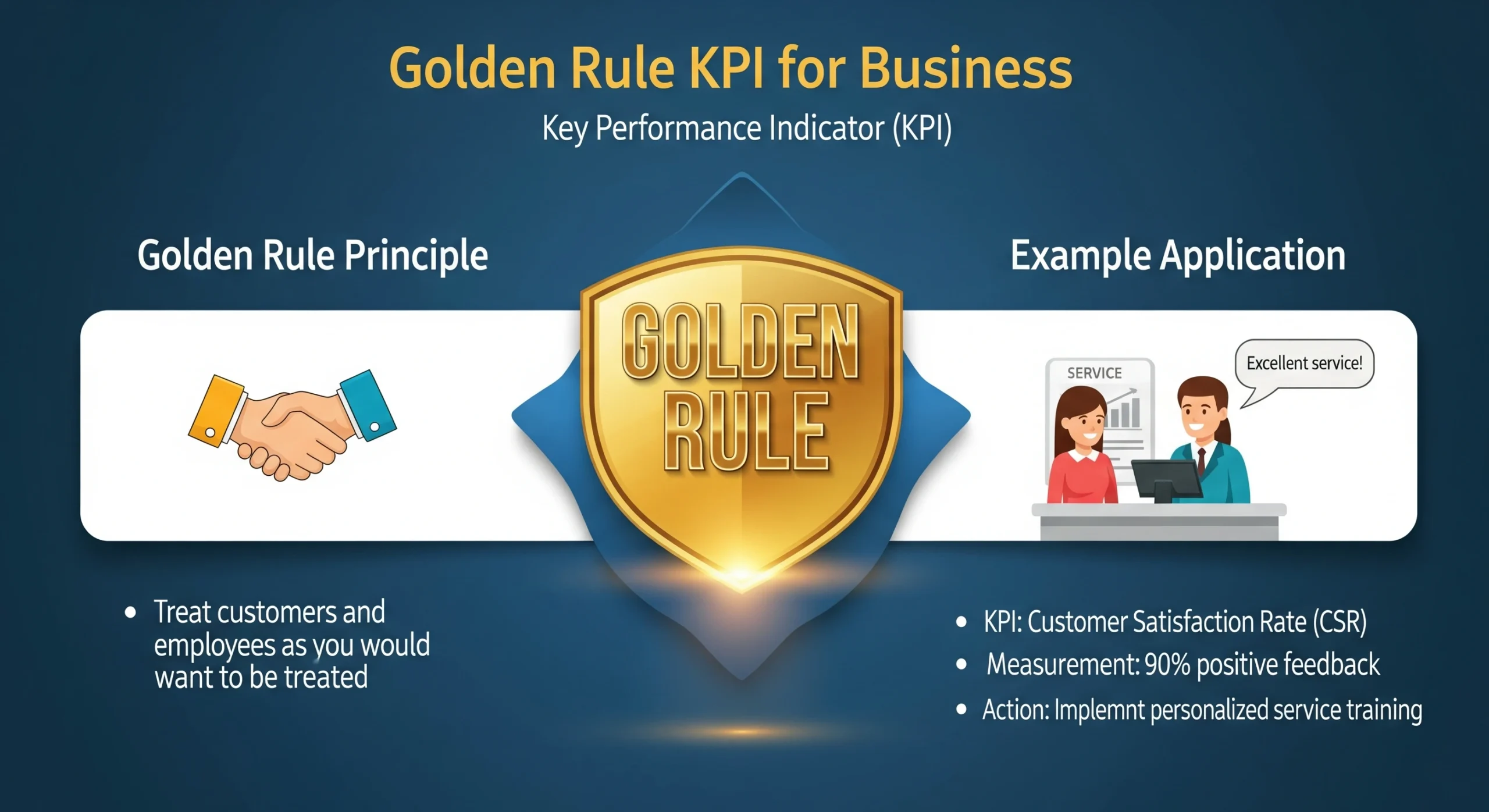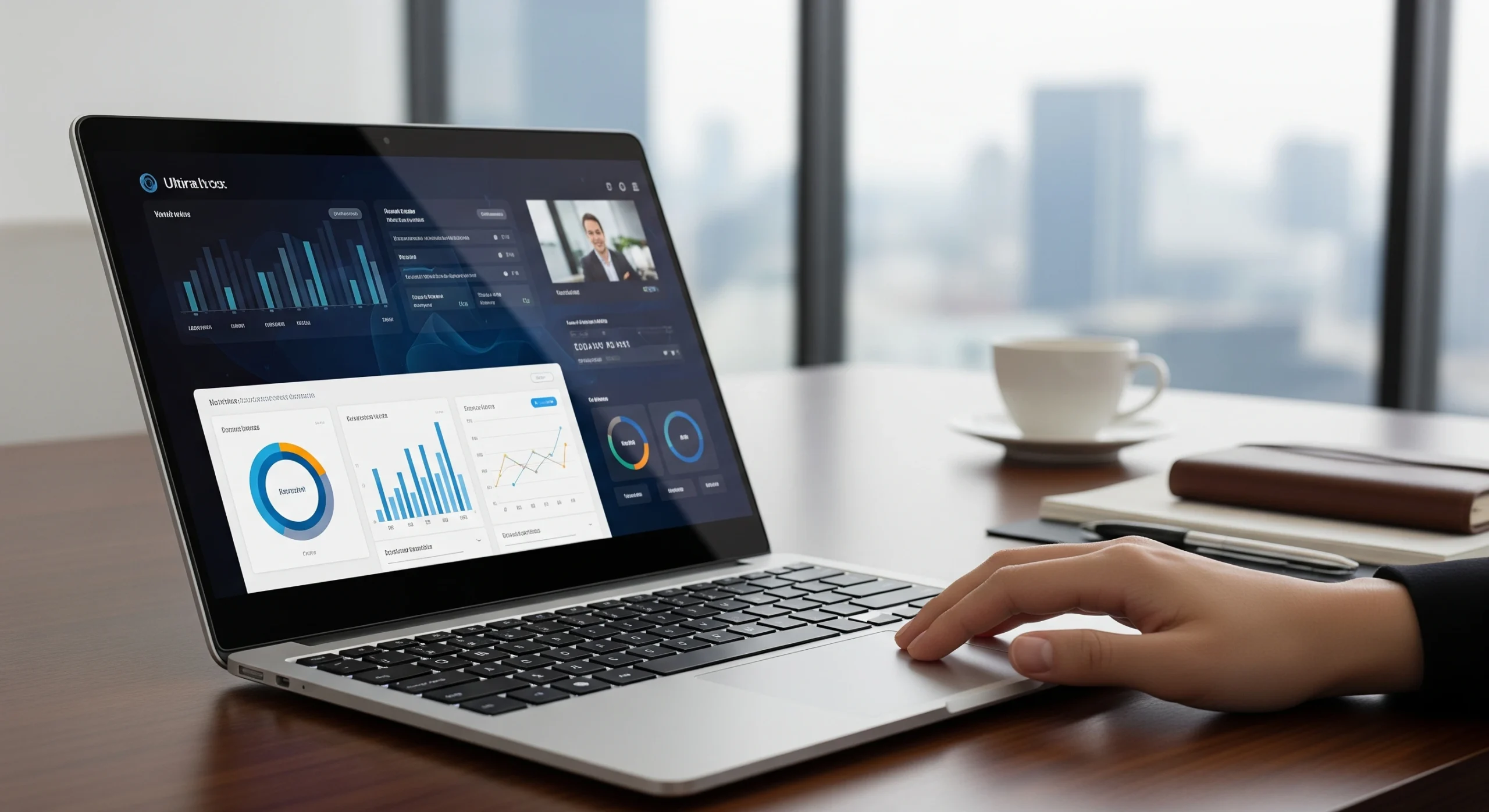on this page, I will provide step by step process of How to Track Key Performance Indicators for Your Business. You will also get Golden Rule KPI with examples. Basically, KPIs help organizations monitor progress, gain insights into performance, and make informed decisions. For example, a retail company might track monthly sales growth as a KPI to assess its performance. Think of KPIs as the “vital signs” of your business – just like heart rate and blood pressure tell a doctor if you’re healthy.
What is a KPI
You can easily learn about KPIs — in fact, many of us use them regularly without realizing it. In simple terms, a KPI (Key Performance Indicator) is a measurable metric that shows how effectively an activity contributes to achieving a business team or individual is achieving specific goal. For instance, a sales team might set a KPI to increase revenue by 10% within the next year. Monitoring monthly sales growth against this target helps assess progress and identify whether any strategic adjustments are necessary.

on this page, you will get detailed information about KPI, benefits, Important, and Examples, Keep reading this page.
Importance of KPIs in Business
Key Performance Indicators (KPIs) are essential tools that help organizations measure, manage, and improve performance using real, data-driven insights.
1. Measure Progress and Define Success
KPIs provide a clear, quantifiable way to evaluate how well a business is performing against its goals. They help establish what success looks like and ensure that progress can be tracked objectively over time
2. Drive Focus and Alignment
By highlighting the most impactful objectives, KPIs keep teams focused on the few activities that truly move the business forward. They align departments such as marketing, sales, product, and customer service around shared performance metrics and outcomes. Finally you know without KPIs, teams work on 100 things. But With KPIs, everyone works on the 3–7 things that actually move the needle.
3. Support Informed Decision-Making
KPIs turn data into actionable insights. Leaders can use KPI trends—such as conversion rates, revenue growth, or customer retention—to make strategic decisions based on facts rather than assumptions, ensuring resources are directed where they create the most value.
4. Identify Strengths, Weaknesses, and Emerging Issues
Monitoring KPIs provides visibility into key performance areas like financial health, customer satisfaction, and operational efficiency. A sudden drop in a KPI, for example, a decrease in conversion rate or profit margin 3.5% to 2.8% in one week, acts as an early warning signal—allowing teams to take corrective action before small issues escalate.
5. Enhance Communication, Accountability, and Transparency
KPIs make performance visible and measurable. Regular reporting fosters open communication across teams, builds accountability, and keeps everyone aware of progress toward targets—whether the company is ahead of schedule or 12% behind its goal.
Benefits of Using KPIs
Implementing Key Performance Indicators (KPIs) provides organizations with measurable, actionable insights that drive performance, engagement, and long-term success.
1. Improved Performance and Focus
KPIs help teams set clear, measurable goals and stay focused on high-impact priorities. Continuous tracking and feedback encourage consistent improvement and accountability across all levels of the organization.
2. Enhanced Employee Motivation and Engagement
When employees understand how their work contributes to business goals through well-defined KPIs, morale and productivity increase. Visible progress toward targets fosters a sense of ownership and achievement.
3. Strategic Growth and Better Resource Allocation
Tracking KPIs helps businesses anticipate market trends, identify growth opportunities, and optimize how resources—time, money, and effort—are allocated. This strategic focus supports long-term profitability and scalability.
4. Greater Transparency and Accountability
KPIs create a shared language for performance assessment, making progress visible to teams, management, and stakeholders alike. This transparency builds trust, encourages collaboration, and strengthens accountability.
5. Smarter, Data-Driven Decision Making
With real-time KPI data, leaders can make faster and more informed decisions. Whether identifying a drop in customer satisfaction or a surge in conversion rates, KPIs provide the clarity needed to act effectively and efficiently.
6. Real-World Impact
Organizations that leverage KPIs often see tangible results—such as faster growth, higher profits, and greater investor confidence. For example, a company focusing on “orders per minute” or “customer happiness score” can boost performance significantly within weeks.
Golden Rules for Effective KPIs (Think S.M.A.R.T.)
- Specific: Avoid vague goals like “Increase revenue.” Instead, use precise targets such as “Increase monthly recurring revenue by 15%.”
- Measurable: Every KPI should be quantifiable — it must include a number you can track.
- Achievable: Set realistic goals. For example, don’t aim for $1M in revenue if you’re currently at $10K.
- Relevant: Ensure each KPI directly supports your main business objectives.
- Time-bound: Define a clear deadline — for instance, “Achieve this by December 31, 2025.”
Essential KPI Starter Pack (Adapt for Any Business)
- Revenue (total or recurring)
- Profit Margin (%)
- Customer Acquisition Cost (CAC)
- Customer Lifetime Value (LTV)
- Monthly Active Users or Customers
- Churn Rate (%)
- Net Promoter Score (NPS)
Start with these seven core KPIs and tailor them to fit your specific business goals.
Bottom Line: KPIs are the scoreboard of your business. Without them, you’re operating blind — but with the right ones, you can make smarter decisions, achieve goals faster, and reduce stress along the way.
Track KPIs in real time
Tracking KPIs in real time allows businesses to continuously monitor performance, identify issues early, and make data-driven decisions instantly. This is achieved through integrated digital tools and automated systems that collect, analyze, and visualize live data.
1. KPI Dashboards
Interactive dashboards such as Tableau, Power BI, and monday.com aggregate data from multiple sources and present it as live charts, graphs, and performance indicators. These centralized views help align strategic goals with day-to-day operations and allow users to drill down into detailed insights.
2. Automated Data Integration
Connecting systems like CRM, ERP, and marketing platforms ensures KPIs always reflect up-to-date information without manual input. Automation tools such as Zapier and Microsoft Power Automate streamline this process, reducing errors and improving data accuracy.
3. Real-Time Alerts and Notifications
Businesses can set thresholds or trigger conditions for KPIs—such as when sales drop below target. When these triggers are activated, alerts are automatically sent via email, SMS, or app notifications, allowing teams to respond quickly to anomalies or opportunities.
4. Mobile and Cloud-Based Monitoring
Cloud and mobile-enabled platforms give decision-makers instant access to performance data anytime, anywhere. Managers can view dashboards, receive alerts, and take corrective action on the go—ideal for remote teams and field operations.
5. Custom Dashboards by Department
Tailored KPI views for departments like sales, finance, or HR ensure that each team tracks the metrics most relevant to their goals. Data visualizations, including real-time graphs and trend charts, keep everyone focused on key priorities.
6. AI and Predictive Analytics
Machine learning tools such as IBM Watson and Google Cloud AI enhance KPI tracking by predicting future trends and identifying potential performance issues before they occur. This foresight enables proactive decision-making and strategic planning.
7. Cloud Collaboration and Transparency
Cloud-based collaboration tools like Slack, Google Workspace, and Microsoft Teams allow KPI dashboards to be shared across departments. This promotes transparency, cross-functional accountability, and faster alignment on performance outcomes.
Effective real-time KPI tracking combines automated data integration, dynamic dashboards, mobile accessibility, and predictive analytics. Together, these tools create a live, actionable view of business performance—empowering organizations to make faster, smarter, and more confident decisions.
If you are willing to know a real time KPI with example, check this case study kpi key performance indicator example.




Leave a Reply